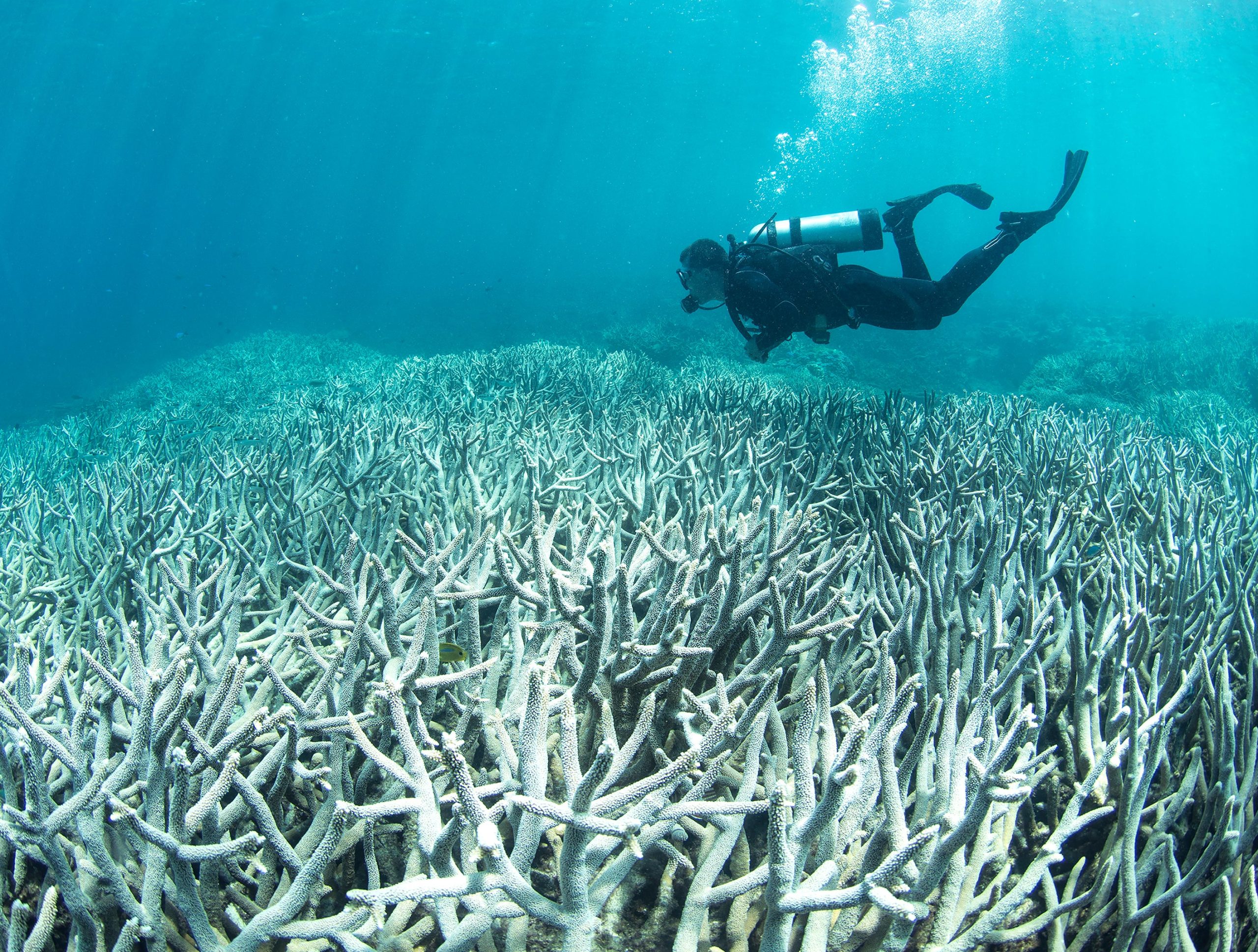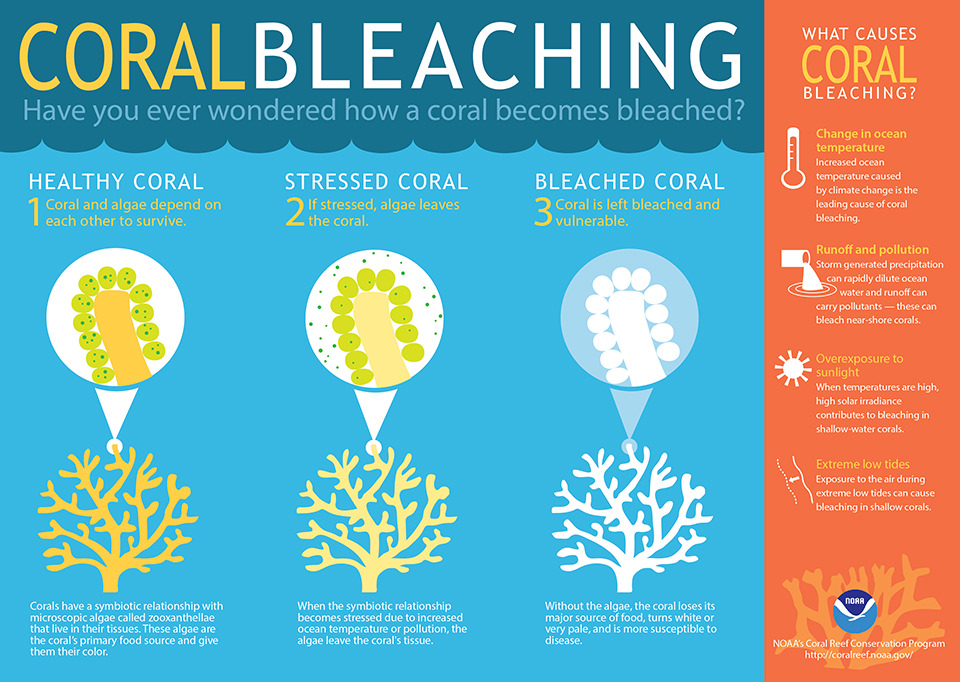Coral Bleaching: What You Need To Know

Coral Bleaching has become a serious issue over the past few years; with Global Warming being the main culprit— NOAA (National Oceanic and Atmospheric Administration) says it is an event that is far from over.
According to The Nature Conservancy’s director of coral reef conservation, Stephanie Wear stated that recent temperature spikes indicate a rough year ahead for the world’s coral reefs.
Why does Coral Bleaching Happen And What Does It Mean For Us?
Coral Bleaching is what it sounds like. On the surface the Coral gets bleached, and instead of retaining it’s beautiful colors it turns white.

Warmer water temperatures associated with climate change can result in coral bleaching. When ocean water gets too warm, the Coral gets stressed and will expel the algae (Zooxanthellae) that live within its tissues causing the coral to turn completely white. The Coral and the algae live together and share resources, but when the coral expels the algae and doesn’t reabsorb it within time, the coral can essentially starve.
“The first thing to understand is that corals get their brilliant colors from tiny algae that live in their tissues. These tiny organisms live in harmony with coral animals, and they basically share resources,” Wear explains. “For example, the most important thing that the algae do is provide food to the corals through carbohydrates they produce during photosynthesis.”
“The next thing to understand is that corals have a limited temperature range within which they can live,” Wear continues. “When it gets too hot, they get stressed out—and this relationship with the algae goes sour. The tiny algae are ejected from the corals, turning them white, thus the term ‘bleached.’”
In 2005, parts of North America lost half of its coral reefs in the Caribbean in one year due to a massive bleaching event. The warm waters centered around the northern Antilles near the Virgin Islands and Puerto Rico expanded southward. Comparison of satellite data from the previous 20 years confirmed that thermal stress from the 2005 event was greater than the previous 20 years combined.
Here are some stress factors that can contribute to significant bleaching events:
Extra-bright sunlight, especially when combined with the aforementioned extra-warm seawater
Disease
Pollution from urban or agricultural run-off
Changes in the salinity, or saltiness, of seawater
Sedimentation from undersea activities like dredging
Lots of living things (including humans) under serious stress may be more susceptible to problems with their health, and corals are no exception.
Is it possible to live without Coral Reefs?
Reefs make up less than 1 percent of Earth’s undersea ecosystems, but they are still vastly important to the ecosystem.
- They shelter 25 percent of marine species,
- protect shorelines,
- support fishing industries,
- provide tourist dollars—and
- part of a larger symbiotic relationship between algae and ocean life
A decline in healthy reefs is a huge issue because it shows that there are instabilities in the ecosystem.
Is there anything I can do?
Reduce your carbon footprint — this keeps greenhouse gases out of the atmosphere, which helps combat climate change and maintain appropriately cool ocean temperatures.
- Try walking, biking or taking public transportation instead of driving.
- Plant a tree and support forest conservation! Trees store carbon and reduce agricultural run-off, which may ultimately end up in the ocean.
- Contact your local legislators, and tell them you support comprehensive climate legislation.
You can also support the Conservancy’s work to protect corals by adopting a coral reef.
Greenism will begin conservation work next year, by helping clean California coasts and making sure that pollutants and trash stay out of the oceans. Our plan is to eventually make our way into the oceans and help researchers and other conservation groups replant and gather data on corals.
